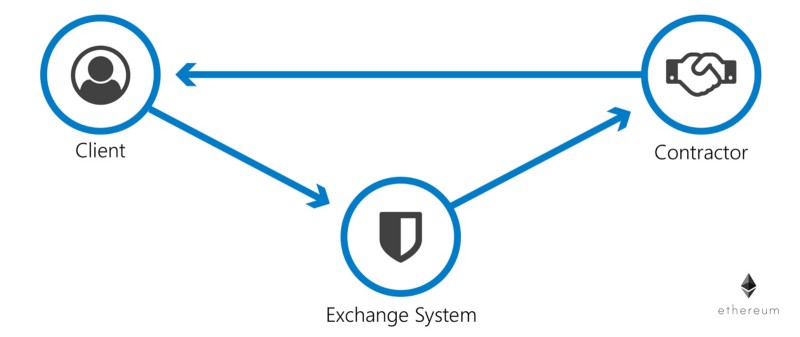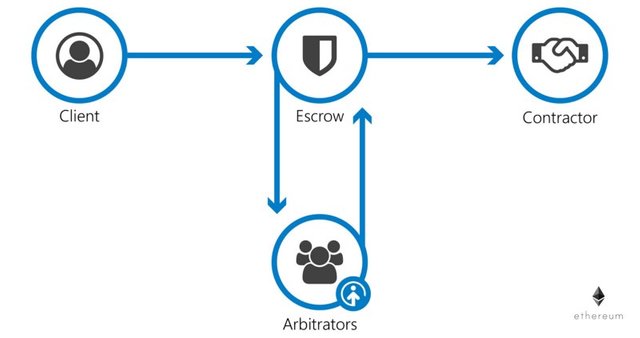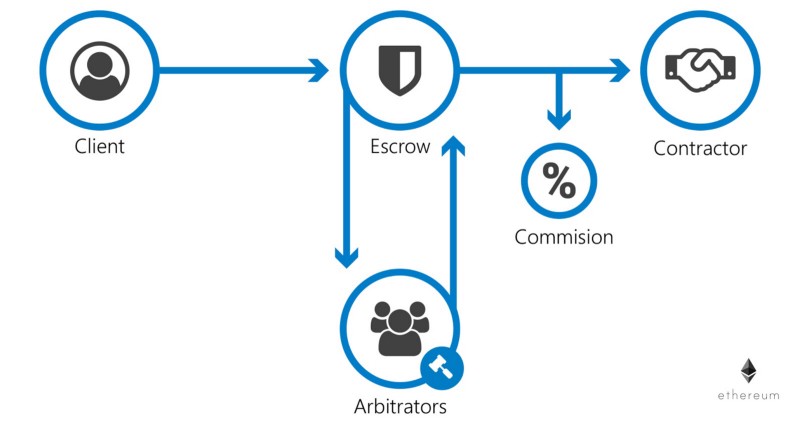
This article aims to explain how a decentralized Escrow functions, and to provide real-world examples of its usage in our service. To note: A decentralized Escrow could be used in a wide variety of ways — not solely for the purposes described below. It is a promising technology will continue to develop.
Imagine a situation where some exchange procedure is underway. Party A and Party B rely on a selected exchange system to follow through with the process and exchange money for a required service or product, or vice versa.

When the exchange takes place entirely inside the system, it is pretty simple and can easily be processed automatically by means of smart contracts. Party A transfers access credentials to access some information and receives some financial incentive from party B. Smart contract executed — exchange successful!
However, imagine a more complex situation: Party A opens the document provided by Party B and finds that it is empty. Basically, Party B failed to provide the service. In this case, Party A can go to a service Escrow, report the situation and get a refund (if it manages to prove that the service was not provided). This is centralized Escrow.

More complex and tricky cases are possible. Say, Party A orders Party B to draw up a contract based on the provided criteria. Party B reports that the task is completed. Exchange procedure is initiated. And this is where Party A figures out that party B failed to meet all the criteria. Party A is pressed to initiate an Escrow procedure against Party B.
The system is built to provide and execute transactions, and can verify that a contract is executed and exchange has happened. The system can prevent some fraud (e.g. providing an empty or completely unrelated document), yet its ability to analyze more complex cases is limited by design — it cannot afford to employ its own team of experts in a wide range of industries to scrutinize tricky cases.
Put most simply, the exchange system needs to receive a trusted confirmation from a third-party service that Party B failed to meet the provided criteria and did not provide the required service to Party A. Once the confirmation is on the table, an independent judge has to decide if the contract has been executed correctly. Basically, this is exactly how a decentralized Escrow functions.

The procedure looks similar to a real-world trial in court, yet it works significantly faster. The thing is that a significant portion of similar cases in the real world never get to court: Party A realizes that it will be very expensive to press charges against Party B and drops the case.
Today, a decentralized Escrow procedure is not provided by service marketplaces. All of them rely on a centralized Escrow, meaning that Escrow judges do not act independently and are encouraged to prefer one of the parties. There is an opinion that most of them are pressed to rule cases in a client’s favor to keep them in the marketplace. Obviously, this approach has many limitations.
The Opporty team stands for fair and transparent conditions for both parties. We will provide standards and describe motivation in upcoming articles. Now, let’s delve into Escrow, oracles, and small business’ real cases of their use.
Decentralized Escrow, Oracles and Small Business’ Use Cases
Opporty’s blockchain-powered smart contracts coupled with decentralized Escrow allow for massive standardization and simplification of business processes and activities. Specifically, they can become a huge boon to law, accounting, insurance, and logistics companies.
Imagine that Company A ordered a specific product produced by Company B. The product has to be delivered co Company A by Company C. All the parties sign a smart contract. Executed in code, the contracts consists of “if-then” statements and describes in detail when, where and how the product should be delivered.
If Company B and C do their job right, Company A will receive the product and close the deal. In the event that something goes wrong, however, any party can abort the procedure by means of oracles.
Say, Company C declines to deliver the product because Company A fails to pay for delivery in time. In case Company A does not admit that it failed to pay for the delivery, Escrow procedure is initiated. Independent, community-selected judges, also known as arbitrators, will study the case and deliver their judgement. Arbitrators receive a commission for their service.
Another example has to do with payment systems. As a rule, they receive a notification when Company C receives payment from Company A or B. However, they cannot realistically check if the event has really happened. Blockchain technology and decentralized Escrow assist in cutting ambiguity out of the picture. Judges vote on the event, establishing clarity on the blockchain.
That being said, Opporty digitizes and simplifies administration of existing processes, ensuring that trust and security are self-enforced and guaranteed by default. Of course, this approach presents many challenges from a technical side, but the Opporty team implements a strategy to turn challenges into advantages.
To learn more, read about alternative dispute resolution: https://en.wikipedia.org/wiki/Alternative_dispute_resolution